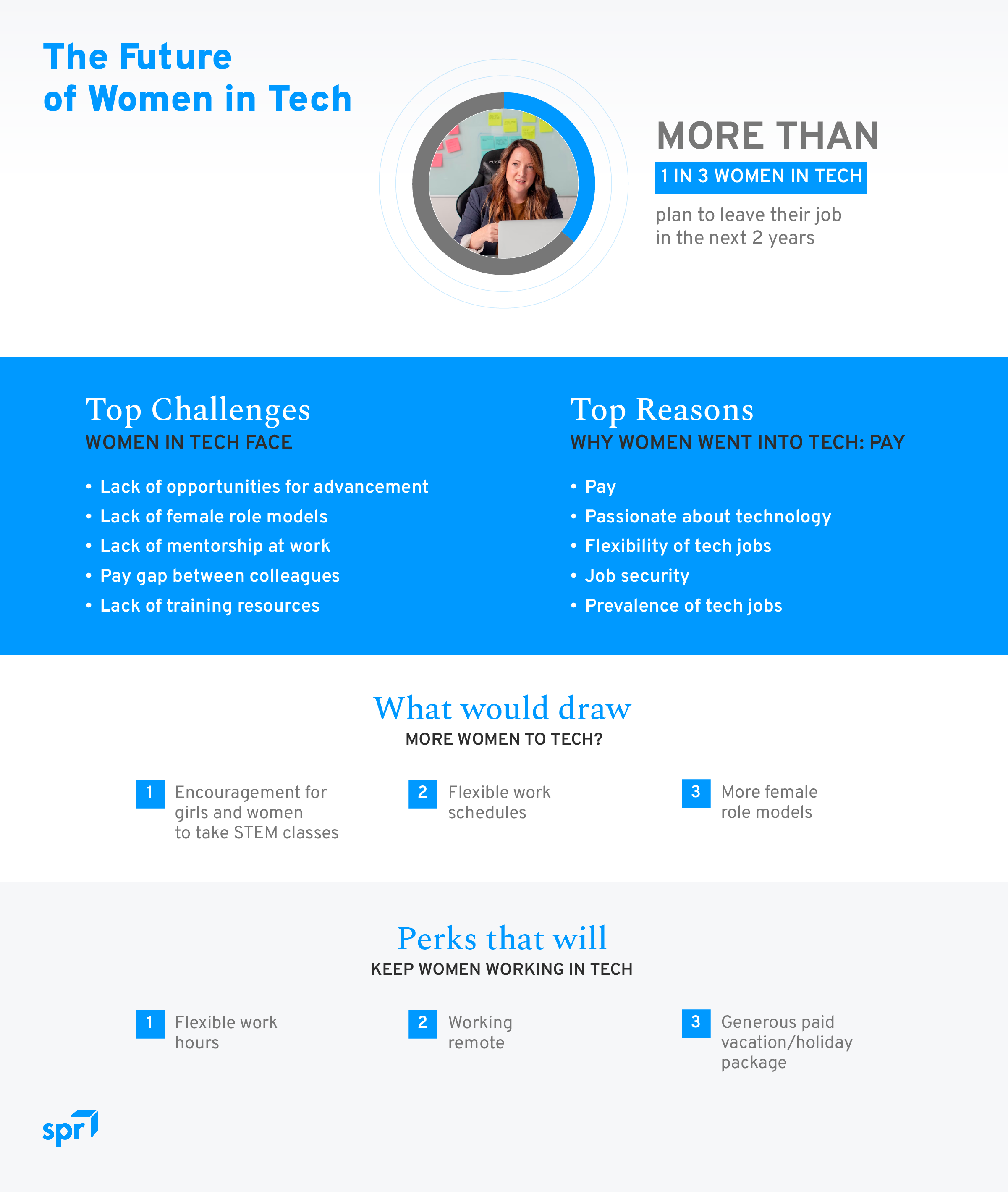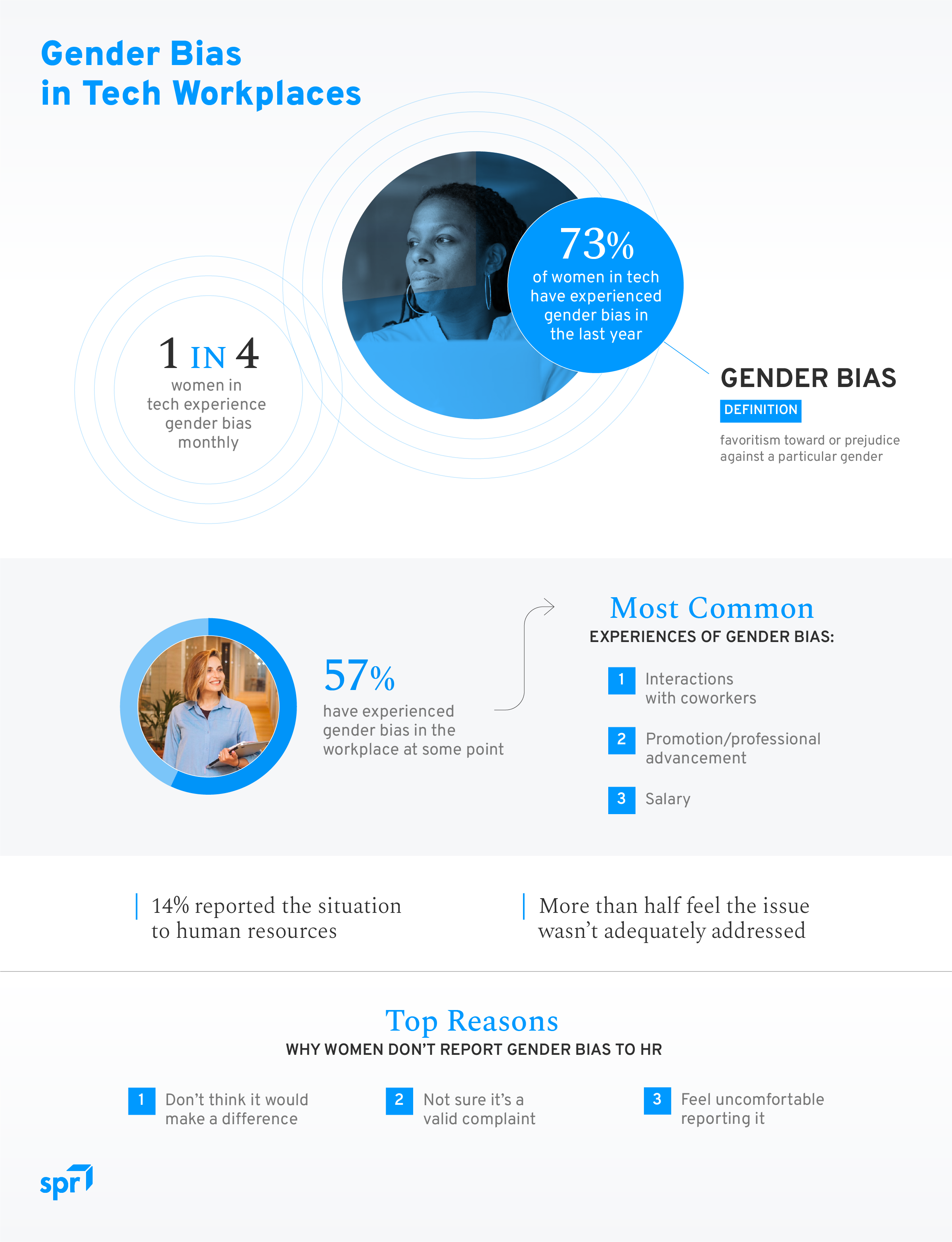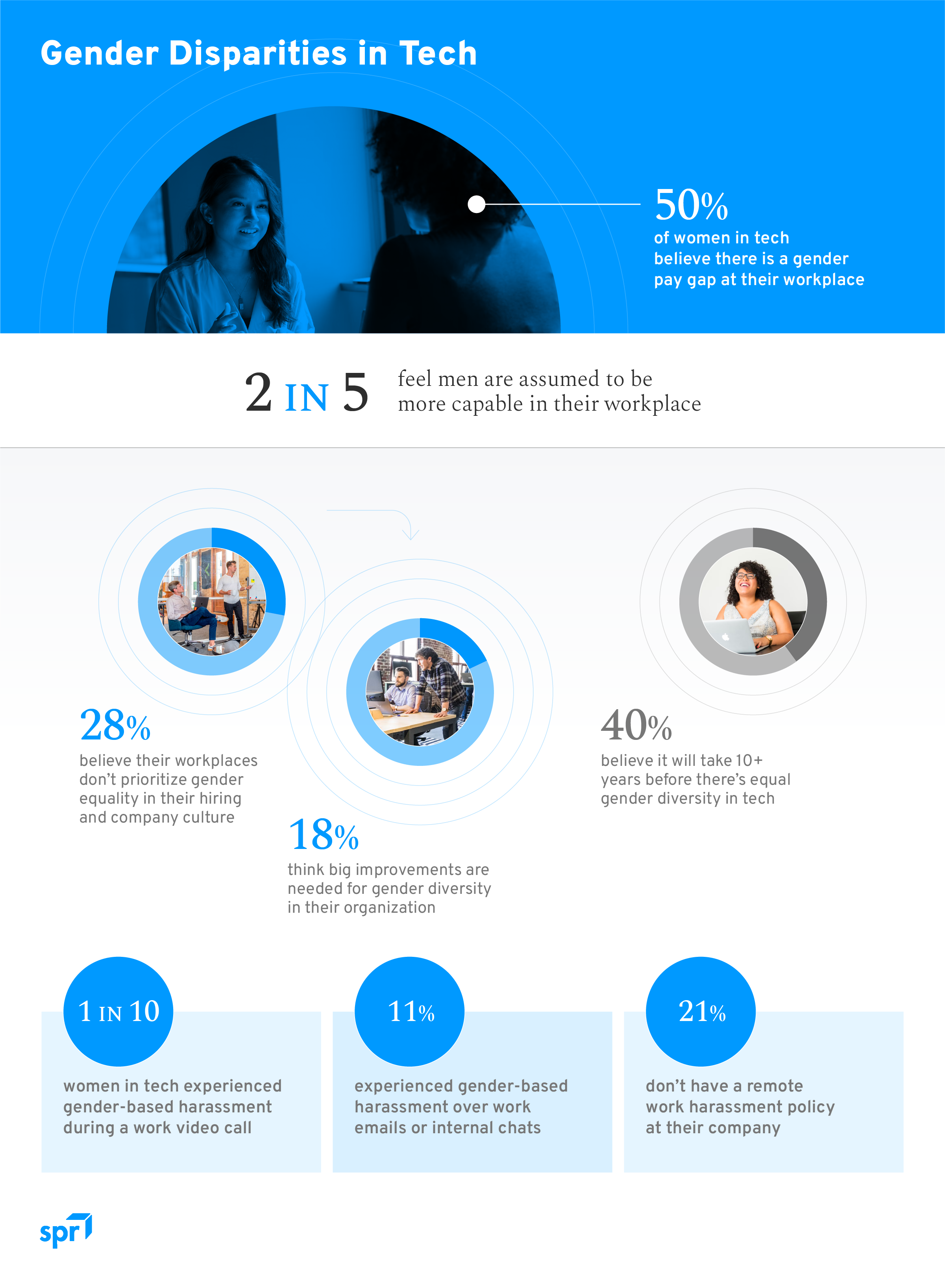Women in Tech Statistics: 73% Experience Gender Bias in the Workplace
Even in today’s modern world, gender inequality in the workforce still exists. In historically male-dominated fields like science, technology, engineering, and mathematics (STEM), women are experiencing gender bias. To better understand their experiences and promote inclusivity and equality, SPR conducted a survey of more than 500 women currently working in STEM fields and not employed by SPR.
Navigating Gender Bias in Tech Workplaces
Despite the evolving landscape of technology, many women in the STEM field have experienced gender bias. Gender bias is defined as favoritism toward or prejudice against a particular gender. Of the women in tech who have experienced gender bias, nearly 3 in 4 (73%) have experienced gender bias in the last year.
“It happens every day,” said a 46-year-old woman who works in STEM. “Everything from men taking over my role in meetings to unequal opportunities.”
More than half of women in tech (57%) say they’ve experienced gender bias in the workplace at some point and 48% have heard of other women in their organization experiencing it as well. The most common experiences of gender bias include interactions with coworkers, promotion or professional advancement, and salary.
“Male coworkers comment about the fact they’re surprised a woman can be so successful as a software engineer,” said a 32-year-old survey respondent. “I’ve had male coworkers who have doubted my abilities and then been surprised to see the efforts and quality of my work.”
When it comes to reporting the situation, 14% told human resources about the experience. Among those who did, more than half feel the issue wasn’t adequately addressed by human resources or management.
Those who chose not to report instances of gender bias to human resources cited various reasons including thinking it wouldn’t make a difference, not knowing if it was a valid complaint, and that they didn’t feel comfortable reporting it.
Gender Gaps In STEM: Womens’ Experiences at Work
When it comes to gender disparities in the workplace, 50% of women in tech believe there is a gender pay gap at their company. Additionally, 2 in 5 feel men are assumed to be more capable than women at their workplace.
“I have been passed up for promotion by men who have less experience than I do, to the point where I’ve begun to question my job,” shared a 58-year-old survey respondent.
Nearly 30% of women believe their workplaces don’t prioritize gender equality in their hiring and company culture and 18% think big improvements are needed for gender diversity in their organization. In fact, 40% believe it will take 10+ years before there’s equal gender diversity in tech.
Nearly half of respondents (49%) are fully remote workers while 38% are in hybrid positions, and 13% go into the office full-time. For those in hybrid or remote workplaces, 1 in 10 women in tech experienced gender-based harassment during a work video call, and 21% don’t have a remote work harassment policy at their company. More than 1 in 10 (11%) also report experiencing gender-based harassment over work emails or internal chats.
The Future of Women in Tech
 When it comes to the future of women in tech, more than 1 in 3 (36%) plan to leave their job in the next 2 years. The top five challenges women in tech face in the workplace:
When it comes to the future of women in tech, more than 1 in 3 (36%) plan to leave their job in the next 2 years. The top five challenges women in tech face in the workplace:- Lack of opportunities for advancement (61%)
- Lack of female role models (47%)
- Lack of mentorship at work (42%)
- Pay gap between colleagues (37%)
- Lack of training resources (30%)
- Encouragement for girls and women to take STEM classes
- Flexible work schedules
- More female role models
SPR, a technology modernization firm based in Chicago, works to create an inclusive and flexible work environment for all employees. Learn more about the company and our approach to partnerships.
Methodology
In December 2023, we conducted a survey of 525 women from across the U.S. who currently work in the science, technology, engineering, or mathematics fields. Job levels across respondents included analyst/associate (31%), manager (20%), entry level (17%), individual contributor (16%), and others (16%). Respondents ranged in age from 18-76 with an average age of 37.
For media inquiries, contact media@digitalthirdcoast.net
Fair Use
When using this data and research, please attribute by linking to this study and citing SPR.


